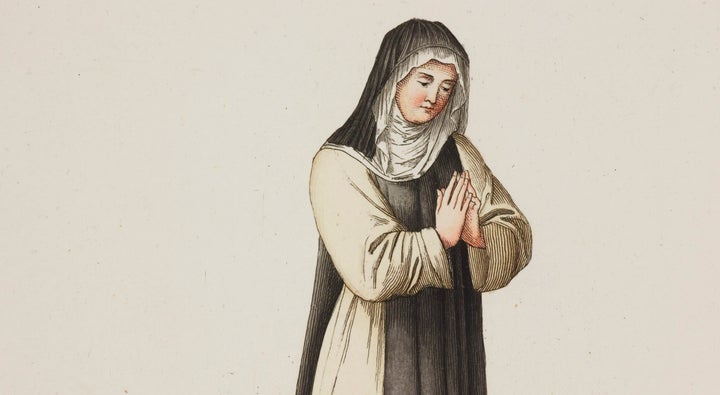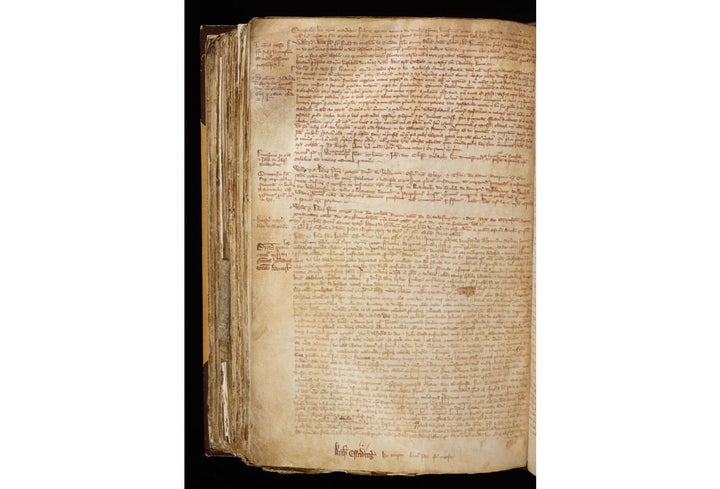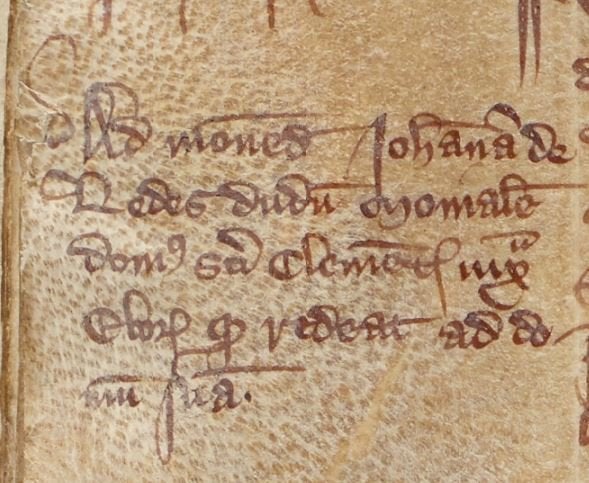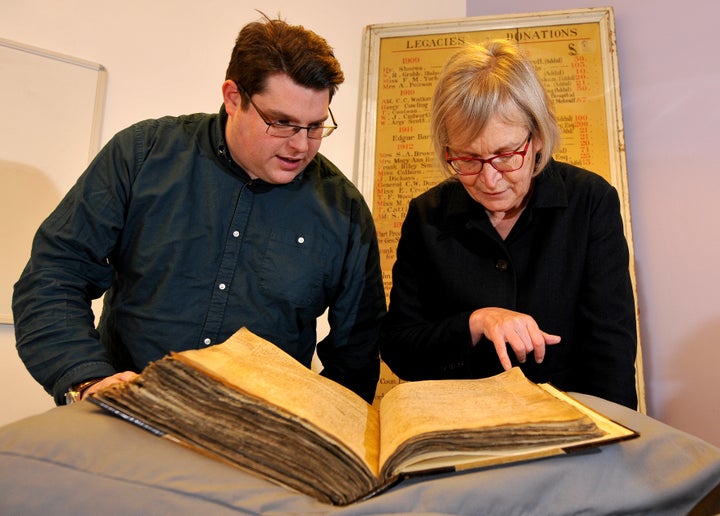
Centuries before most English women could freely choose the direction of their lives, there was Joan of Leeds, a rebellious medieval nun who went to extreme lengths in an attempt to forge her own path.
The 14th-century nun apparently faked her own death by creating a dummy “in the likeness of her body” before running away from her convent, according to archivists at the University of York. But her escape was discovered.
“She now wanders at large to the notorious peril to her soul and to the scandal of all of her order,” Archbishop of York William Melton wrote (in Latin) about Joan in a record book dated 1318, the Guardian reports.
Archivists at the University of York resurfaced details about Joan’s story last week, while translating and digitizing 16 registers in which the archbishops of York documented their business between 1304 and 1405.

Joan was apparently so fed up with her life at St. Clement’s Nunnery in York that she concocted a wild plan to escape from her vows of poverty, chastity and obedience. According to a marginal note in the register, Joan simulated “a bodily illness” and “pretended to be dead.” With the help of some accomplices, she tricked her fellow Benedictine sisters into burying a lookalike dummy “in a sacred space” among actual deceased members of her order.
Joan fled about 30 miles away, to the town of Beverley, according to the Church Times. When rumors about her scandalous escapade finally reached Melton, the horrified archbishop ordered a church official in Beverley to send her back to the convent.
Melton’s note in the register describes how Joan had “impudently cast aside the propriety of religion and the modesty of her sex” and faked her death “in a cunning, nefarious manner.”
“Having turned her back on decency and the good of religion, seduced by indecency, she involved herself irreverently and perverted her path of life arrogantly to the way of carnal lust and away from poverty and obedience,” Melton wrote.

University of York historian Sarah Rees Jones, who is leading the digitizing project, told HuffPost that her team isn’t sure if Joan ever returned to the convent ― either willingly or by force.
Upper-class women of Joan’s time typically had two life options: joining a convent or entering into an arranged marriage. Most other women of the period had to work for their living, typically in crafts or agriculture. Some women owned real estate or worked in retail, Rees Jones said.
But whatever life they might have carved out for themselves, all those women still lived in a largely “patriarchal society,” Rees Jones said. “There were limits to how far they could succeed in or even enter many professions, still less positions of public authority,” she said.
Entering a convent often meant access to a better and more secure standard of living. Religious life was also a way to avoid marriage and the risks then associated with childbirth.

Little is known about Joan’s background before she entered the convent. Nuns in her region came from a wide range of families, from artisans to gentry, Rees Jones said. Women were allowed to profess a nun’s vows when they were as young as 14. It was supposed to be a voluntary decision, but the historian said there are some stories of young nuns and monks from Joan’s time having been forced into religious life.
It wasn’t unusual for people to have a change of heart after entering a convent or monastery. Typically, these runaway monks and nuns were punished for their actions, Rees Jones said ― confined for some time, deprived of food or even beaten.
Joan’s adventures were also not the first scandal to plague St. Clement’s Nunnery. Less than 20 years earlier, a nun named Cecily apparently fled from the convent under the cover of night, discarding her nun’s robes to pursue a life with her lover in a nearby town.